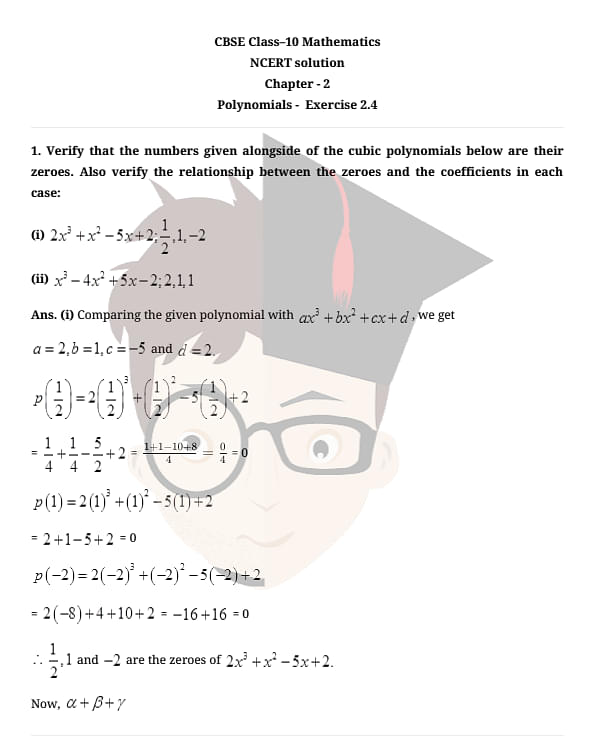
Jasmine Grover Content Strategy Manager
Content Strategy Manager
NCERT Solutions for Class 10 Maths Chapter 2 Polynomials Exercise 2.4 is given in this article. Class 10 Maths Chapter 2 Exercise 2.3 has 5 exercise questions that cover various important concepts of polynomials such as degree of a polynomial, zeroes of a polynomial and roots of polynomials
Download PDF: NCERT Solutions for Class 10 Maths Chapter 2 Exercise 2.4
Check out the solutions of Class 10 Maths NCERT solutions chapter 2 Polynomics Exercise 2.4





Read More: NCERT Solutions For Class 10 Maths Polynomials
Check out other exercise solutions of Class 10 Maths Chapter 2 Polynomials
Class 10 Chapter 2 Polynomials Topics:
| Polynomials Important Questions | Polynomials Formula | Cubic Polynomial |
| Polynomials Revision Notes | Vietas Formula | Parabola Graph |
CBSE Class 10 Maths Study Guides:





Comments